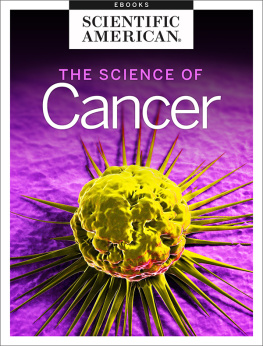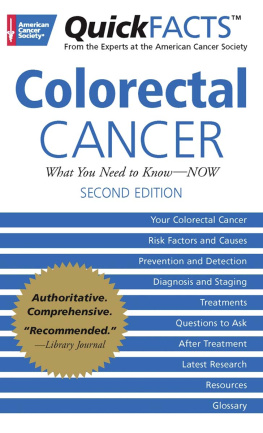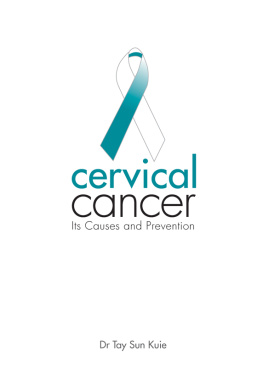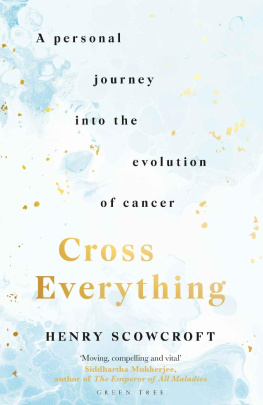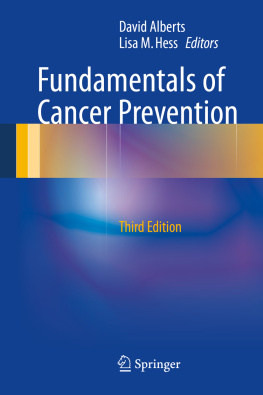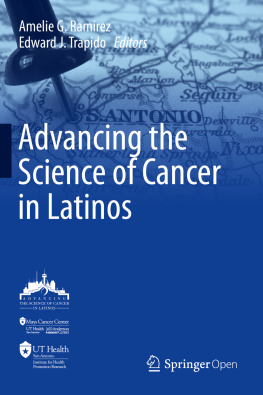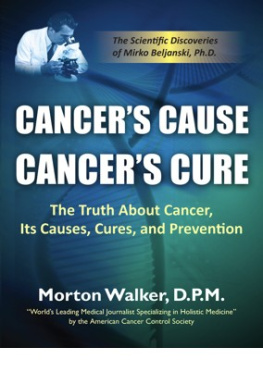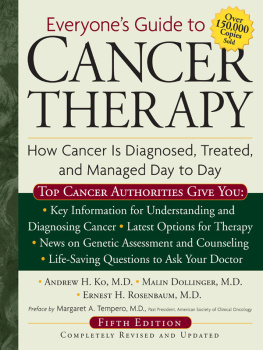Contents
Pagebreaks of the print version
TOBACCO
AND CANCER
THE SCIENCE AND THE STORY
TOBACCO
AND CANCER
THE SCIENCE AND THE STORY
Editors
Stephen S Hecht
Dorothy K Hatsukami
University of Minnesota, Twin Cities, USA

Published by
World Scientific Publishing Co. Pte. Ltd.
5 Toh Tuck Link, Singapore 596224
USA office: 27 Warren Street, Suite 401-402, Hackensack, NJ 07601
UK office: 57 Shelton Street, Covent Garden, London WC2H 9HE
Library of Congress Cataloging-in-Publication Data
Names: Hecht, Stephen S., editor. | Hatsukami, Dorothy K., editor.
Title: Tobacco and cancer : the science and the story / editors, Stephen S. Hecht, Dorothy K. Hatsukami, University of Minnesota, Twin Cities, USA.
Description: New Jersey : World Scientific Publishing, [2022] | Includes bibliographical references and index.
Identifiers: LCCN 2021034645 | ISBN 9789811239526 (hardcover) | ISBN 9789811239533 (ebook) | ISBN 9789811239540 (ebook other)
Subjects: LCSH: Cancer--Prevention. | Tobacco--Physiological effect. | Tobacco use--Health aspects. | Smoking.
Classification: LCC RA645.C3 T63 2022 | DDC 614.5/999--dc23
LC record available at https://lccn.loc.gov/2021034645
British Library Cataloguing-in-Publication Data
A catalogue record for this book is available from the British Library.
Copyright 2022 by World Scientific Publishing Co. Pte. Ltd.
All rights reserved. This book, or parts thereof, may not be reproduced in any form or by any means, electronic or mechanical, including photocopying, recording or any information storage and retrieval system now known or to be invented, without written permission from the publisher.
For photocopying of material in this volume, please pay a copying fee through the Copyright Clearance Center, Inc., 222 Rosewood Drive, Danvers, MA 01923, USA. In this case permission to photocopy is not required from the publisher.
For any available supplementary material, please visit
https://www.worldscientific.com/worldscibooks/10.1142/12348#t=suppl
Typeset by Stallion Press
Email:
Printed in Singapore
Dedicated to elimination of the tobacco and cancer pandemic
2022 World Scientific Publishing Company
https://doi.org/10.1142/9789811239533_fmatter
Contents
K. Michael Cummings, Anthony Brown and Baron Philipson
Jonathan M. Samet
Karam El-Bayoumy
Irina Stepanov
S. Jane Henley, Taylor Ellington, Stephen Stanfill, Kathi Mills and Michael J. Thun
Maciej L. Goniewicz
Stephen S. Hecht
Sharon E. Murphy
Loc Le Marchand
Gary D. Stoner
Terry Frank Pechacek
Judith J. Prochaska and Neal L. Benowitz
Michael P. Eriksen and Carrie F. Whitney
David L. Ashley
Kenneth E. Warner
Preface
The relationship between cigarette smoking and cancer began to crystallize in the 1950s with both animal experiments and human epidemiological studies demonstrating this link. This book tells the story of the remarkable evolution of the science, how the important discoveries were made, what we know currently about the ways that tobacco causes cancer, and what approaches can be used to reduce the risk of cancer due to tobacco use. Although there are excellent books and monographs on tobacco and cancer, both in the popular press and as government summaries, none relate the scientific story at the level of non-specialist graduate and medical students, researchers, or educated popular science readers. In this book, with a primary focus on the United States, we bring together 24 renowned experts on the subject of tobacco and cancer to summarize specific aspects of this critical topic in relatively non-technical terms while also incorporating some personal insights related to the story of the discovery process. This highly authoritative book is also expected to be an excellent teaching tool and basis for a course for graduate and medical students, as well as an introduction to the field for postdoctoral fellows and new researchers.
Our goal is to touch upon the past history of the practices of tobacco manufacturing that led to the high rates of cigarette smoking, the scientific methods that were used to make the association between tobacco and cancer, the constituents responsible for causing cancer and the biological mechanisms leading to cancer, approaches to reduce cancer risk and tobacco use, and future innovative policy approaches to reduce cancer mortality caused by smoking. The authors of each of the chapters are leaders in the scientific field of tobacco control and have had significant roles in the evolution of ideas, science or policies that are described in their chapters. As a teaser, the following provides a synopsis of each chapter.
The path and inventions that led to the development and popularity of one of the deadliest consumer products, cigarettes, is a fascinating story that is illustrated in written by K. Michael Cummings, Anthony Brown and Baron Phillipson. As described by these authors, cigarettes emerged as a popular product at the turn of the 20th century for a number of reasons including the reduction in cost due to the invention that led to mass manufacturing of cigarettes, the ability to grow tobacco in challenging soil conditions, and through the use of cheap reconstituted tobacco. On top of this massive production of cigarettes, the tobacco industry launched aggressive advertising campaigns. These sophisticated Madison Avenue marketing campaigns, which included promotional activities, were aimed at both men and women and, most egregiously, at children in order to ensure a steady stream of customers. Meanwhile, cigarette manufacturers continued to perfect the cigarette by finding ways to make them taste smoother, more appealing and more addictive. What better way to recruit and retain customers? When information on the health risks of smoking began to become known, cigarette manufacturers made and deceptively promoted cigarettes that were perceived to be less harmful. To this day, cigarettes are continually mutated to capture more consumers. Tobacco companies knew of the health consequences of smoking before the information became public. But instead of owning up to their scientific discoveries, they obfuscated these associations by putting up smoke screens to generate doubt. At its peak, the cigarette manufacturers were able to capture more than 40% of the U.S. population as smokers, which resulted in the 20th century being called the Cigarette Century. However, scientists and physicians became more concerned about the increasing incidence in cancer which appeared to be related to the increasing prevalence of smoking. What type of studies led to the final nail in the coffin that linked smoking to cancer?
examining the association between lung cancer and smoking did not occur in earnest until the early 20th century. By the 1930s, lung cancer rates were dramatically increasing as a result of the tobacco industrys success in capturing consumers through their marketing practices and addictive product. The rise in lung cancer cases was initially observed and reported by clinicians and later followed by epidemiological studies that were initially inconsistent in demonstrating any association between smoking and lung cancer. However, with the use of more sophisticated methodology which included case control and longitudinal cohort studies, from the 1950s to 1964, evidence was accumulating linking smoking with lung cancer. Several systematic reviews were conducted including the landmark 1964 U.S. Surgeon Generals Report, which concluded that smoking causes lung cancer (in men). Over the years, smoking cigarettes was confirmed as a cause of multiple cancer types in both men and women, and secondhand smoke as a cause of lung cancer in healthy nonsmokers. However, epidemiological studies were not the only pieces of evidence that showed that tobacco use caused cancer. A series of animal studies strongly supported the human study findings.



